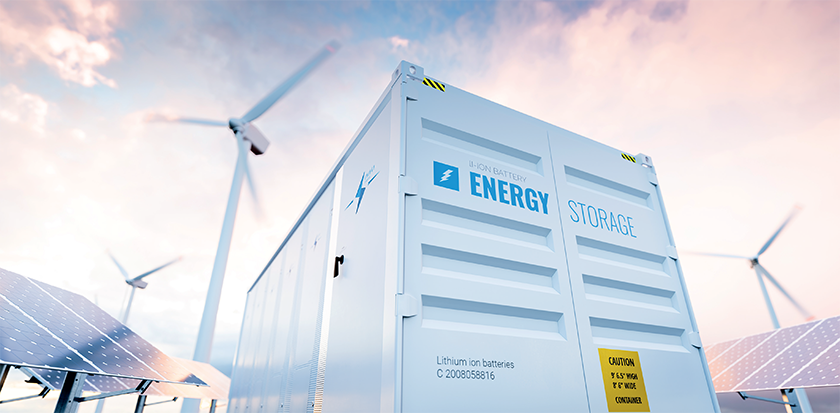
The right solution
In response to a global spike in gas prices, due to a volatile international energy market, April saw a new energy price cap come into effect and the release of a new Energy Security Strategy for the UK. As a result, household bills have skyrocketed, and inflation has risen to nine percent, the highest in 40 years. With further increases to the price cap coming in October, many households are becoming desperate and are at the mercy of a volatile market with nowhere else to turn.
With households and businesses on the front line of the impact, and anxiety around the climate crisis, there has never been such an important time to re-engineer the grid with a clean and diverse energy mix, to save people from impending fuel poverty.
The Energy Security Strategy
The strategy itself saw varied pledges to increase nuclear, offshore wind, low-carbon hydrogen, and solar capacity, as well as an increase in North Sea oil and gas drilling.
Despite the broad range of tactics included in the strategy, it overlooks one of the most fundamental but complex matters when approaching a net zero grid. Analysis from Balance Power demonstrates that the proposed capacities within the Energy Security Strategy are likely to generate enough energy to meet net-zero grid ambitions, but supply and demand don’t always align. As it stands, there are periods when both generation and demand are in excess. Without action to resolve this conundrum, there could be insufficient generation to cover demand a startling 24 percent of the time.
We need to keep the system running effectively and securely, while keeping costs low for consumers. The inclusion of low carbon technologies such as nuclear are, of course welcome, however, this comes with a significant cost to the treasury, and each station can take almost 20 years to build, over half of which can be attributed securing relevant permissions. This won’t help to reduce energy bills for a long time to come, and despite increasing support for renewables, it’s a similar story there.
While the increased emphasis on clean energy in the strategy is encouraging, our analysis indicates that key supporting policies are lacking.
The demand vs generation quandary
We support the increase in renewable energy capacity, but the UK is not going to reach net zero if it can’t solve the issues around aligning generation and demand. The recurring misalignment of generation and demand leaves the UK vulnerable to both power shortages and wasted excess generation.
Electricity storage is the clear solution to this problem, with the ability to act as a safeguard when demand drastically increases or when excess electricity is generated. The Energy Security Strategy also did not sufficiently address the increased need for energy efficiency since reducing demand will reduce both the number and intensity of periods of excess demand.
At the moment, the electricity storage market is being driven by shorter duration solutions in the region of 1h to 2h, but this is not sustainable if we want to reach net zero. Longer storage solutions are currently in their infancy, and it is likely that 4h solutions will become the default, but not until the late 2020s. The current electricity storage market isn’t accelerating at the rate needed to solve the generation vs demand alignment problem. The majority of the 1/2hr systems in planning/operation today are not capable of being expanded beyond that point due to space constraints. This means new network capacity would need to be created to accommodate additional projects. Without solving this issue, we’re never going to transition securely to a 100 percent renewable electricity grid.
Ultimately, calling for an increased roll-out of renewable energy projects, whilst reducing reliance on fossil fuels, requires increased energy investment. Investment in all swathes of the clean energy mix is essential, but in particular, is sorely needed in electricity storage. More attention needs to be paid to electricity storage, along with increased investment in advancing technology, if we are to reach and sustain a net zero grid.
Slacken the tight reins on planning
Despite Business and Energy Secretary, Kwasi Kwarteng’s support, a critical omission from the energy strategy was the much-needed reforms on planning permission. The planning process, particularly for energy projects, is being held up by NIMBY attitudes and a tricky navigation of planning policies, causing unnecessary delays that can last for years.
The government must remove barriers to planning, something which critically doesn’t cost the consumer anything at all. While the projects won’t come into operation immediately, a change to planning rules would have an immediate impact on the volume of projects that we will see being rolled out in the next few years.
This is an absolutely crucial element which must be addressed, along with more attention on commercially viable electricity storage technology, and increased investment in advancing technology, if we are to reach and sustain a net zero grid.
Put simply, the UK needs more renewable energy projects, and particularly electricity storage projects, rolled out to provide clean energy, and to achieve this, swift planning permission for these projects must be granted. Increasing investment in advancing electricity storage technology, and speeding up planning permission approvals would have the most meaningful, low cost to consumers, and quickest impact on the energy transition.
 PHIL THOMPSON
PHIL THOMPSON
Phil Thompson is CEO of Balance Power, one of the UK’s leading energy project developers whose mission is to create a new energy landscape that respects the UK’s biodiversity and beauty, whilst powering a carbon-free future for everyone. Phil has spent over a decade developing energy projects, including solar, battery storage, and peaking technologies, and has delivered and sold projects to the most established funds in the UK.
For further information please visit: www.balancepower.co.uk